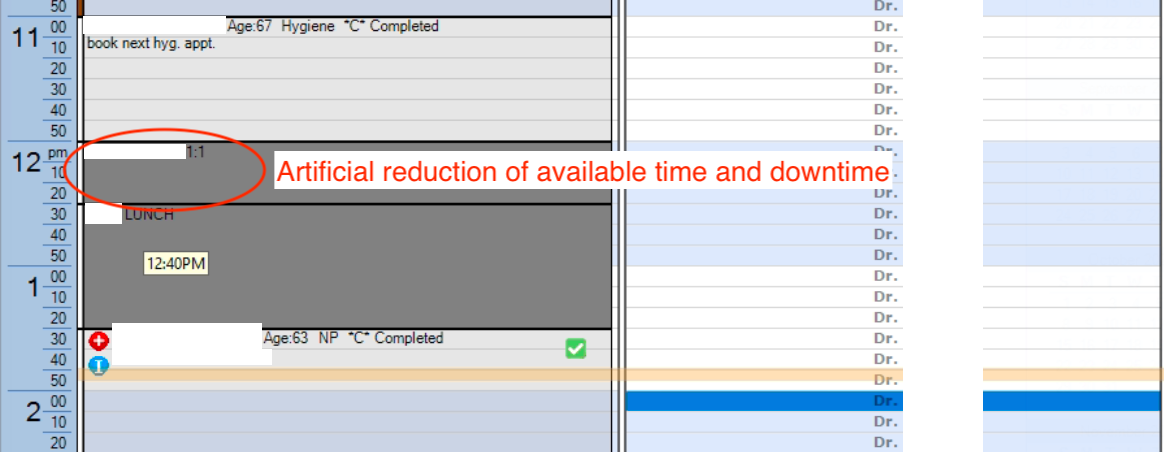Last spring, I re-took a first-year stats course, to see if I still remembered the basics. The single most challenging part of the course was trying to figure out how many of a specific type of card there are in a deck. There are 52 cards, it really shouldn’t be that difficult. But then someone asks a question like, “how many unique 5-card straights are in a 52-card deck?” and all of a sudden I start to scramble. I want to invent complex algorithms for counting sets. And each time, I need to remind myself, there has to be an easier way.
Any intelligent fool can make things bigger, more complex, and more violent. It takes a touch of genius—and a lot of courage to move in the opposite direction.
Ernst Friedrich "Fritz" Schumacher, "Small is Beautiful", an essay, in The Radical Humanist, Vol. 37, No. 5 (August 1973), p. 22
Today we are going to be tackling what seems like an easier challenge than counting cards. We will be counting time. We are going to look at some of the challenges involved in counting time, and some of the ways it’s easy for us to get lost, to choose complex solutions for simple concepts.
To be clear: This week, we ask questions. Next week, we will make decisions.

The Big Idea
Counting time should be simple. It’s not—unless we make good choices.
Learning Goals
What makes it challenging to define available time, productive time, and downtime?
What are some examples of doctor and hygiene schedules?
How can numbers mislead us?
Available Time, Productive Time, and Downtime
We are concerned about each doctor’s available time, productive time and downtime. Let’s start with some definitions.

Unit of Time. We count time in blocks of 10 minutes each1. One ten-minute block is called one unit of time.
Available Time. The number of ten-minute units that a provider is available to work.
Productive Time. The number of ten-minute units that a provider has a patient in the chair.
Downtime. This is the number of ten-minute units where there is no patient in the chair. Also known as unproductive time or white space.
Blocked Time. Time in the schedule that a provider has been blocked off (with a grey block) and where they are unavailable to work.
Example: A Daily Schedule
Here is a simple example of a daily schedule. Two doctors work on this day, with no overlap in the schedule, and no hygienist. Can you see where one doctor’s schedule ends and the other begins?

I already find this representation a bit challenging to read. Looking closer, I can see that each provider’s day has been outlined in a black rectangle. The first dentist (let’s call her doctor A) is working in operatory 5, from 8 am - 12 pm. The second dentist (let’s call him doctor B) is working from 12 pm - 8 pm, and is available both in operatory 5 and operatory 7.
Doctor A:
Available Time. This dentist starts at 8:00 am and works until noon. That’s four hours, or 24 units. Is that the number you came up with? Not everyone would agree. The main question is, Was the provider available to work during that time? I see two sections of blocked time in the schedule, from 8:00 - 9:00 (6 units) and from 9:50 - 10:30 (4 units). Should that blocked time be removed from available time? Depending on your choice, the amount of total available time is either:
Count blocked time as available: 4 * 6u = 24 units, or
Don’t count blocked time as available: 24u - 6u - 4u = 14 units2.
Productive Time. Dentist A had three appointments (5u + 3u + 1u) that morning, for a total of 9 productive units.
Downtime. She also had three blocks of downtime (2u + 1u + 2u), for a total of 5 downtime units3.
Doctor B:
Available Time. This dentist started at noon, and his schedule was open in two columns until 8:00 pm. This raises the question, does available time count out of just one column, or should it be counted from both columns?
Count only one column? 8 x 6u = 48u. Minus an hour for lunch. 48u - 6u = 62 available units.
Or should we count two columns? 62 available units per column, times 2 columns, gives 124 available units4.
Productive Time. He has a total of four appointments (6u + 6u + 6u + 6u), or 24 productive units.
Downtime. There are three unproductive blocks (3u + 3u + 12u), for a total of 18 units of downtime.
Some Misleading Numbers
I want to finish off with a couple screenshot examples of where numbers can mislead us.
Example 1: Adding random meetings to the schedule

Example 2: Blocking lunchtime

Example 3: Ambiguity around when the day starts and ends

Next Week: A New Definition of Available Time
We now have a better shared understanding of the challenges for defining available time, productive time and downtime. We also understand how easy it is to create ambiguity in a real-life schedule around what to count as blocked time.
Next week, we will create a new definition of available time, one which rewards providers and their assistants for coming in, getting the job done, and getting out. See you next time.
Notice that even here, we are making a choice. Dental clinics generally choose to count units in 10-minute or 15-minute increments. There are advantages and disadvantages to each, which exceed the scope of this post.
In future posts, I’m going to define available time differently (to keep things simple). If you are visiting from the future, you might count 14 available units with our new “simple” definition, but for a different reason.
Using the “simple” definition, I get 7 units of downtime.
Notice that the lunch isn’t blocked in the second column as well. This increases ambiguity. Should we count that block in the second column as available time or not?



